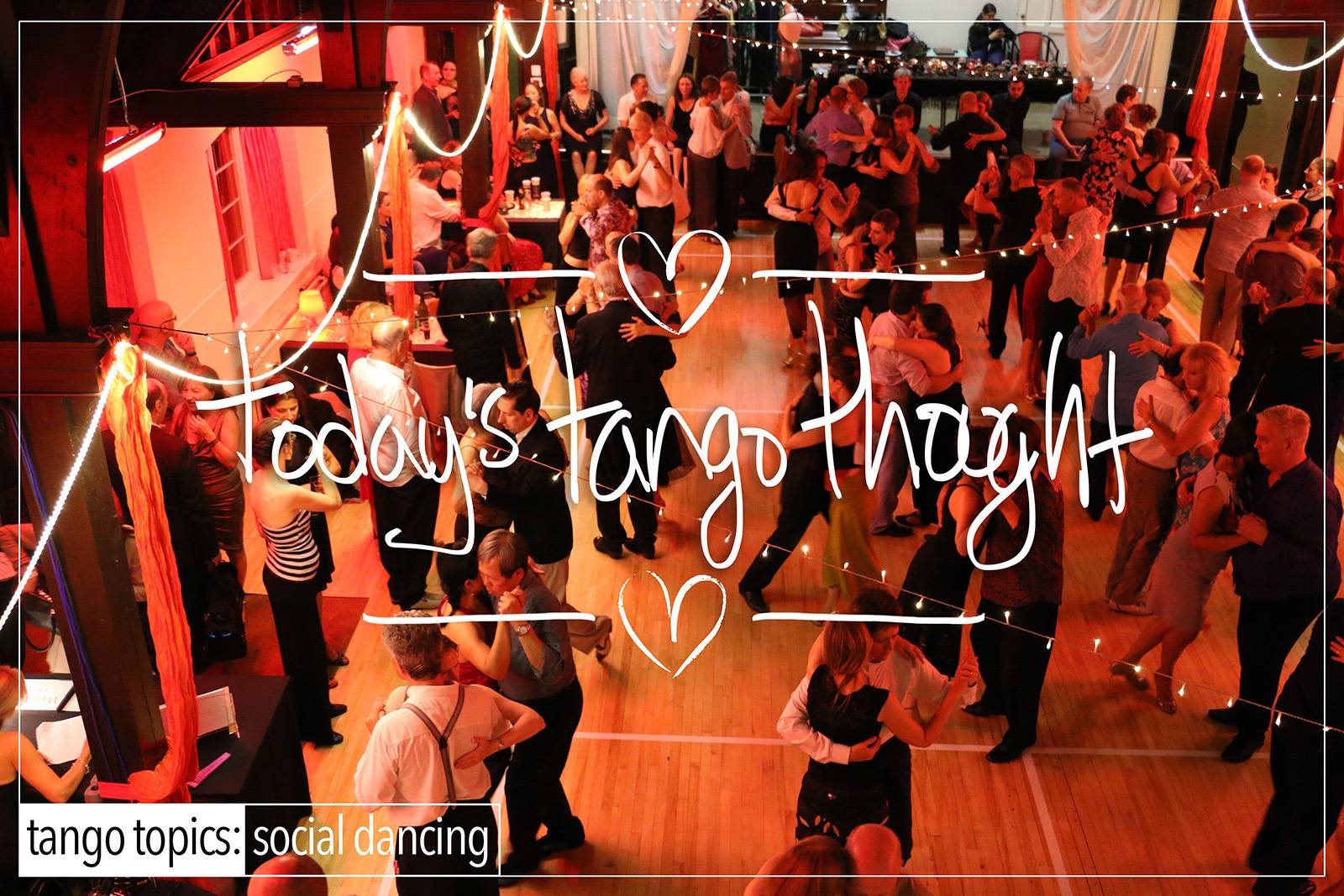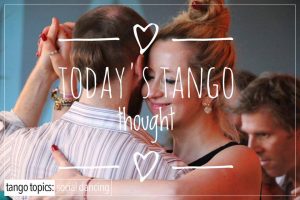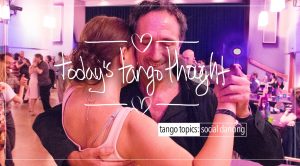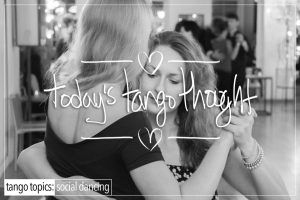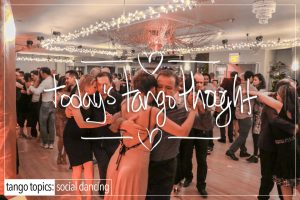“Floorcraft” best defined, in layman’s terms, as: Following the couple ahead of you, trying not to hit tables, chairs, or to bash your partner into anyone or anything, whilst simultaneously using non-repetitive vocabulary, in time to the music, all while keeping the rotunda moving. That definition is a bit simplistic. And the reason is because the term itself is wide ranging and covers a lot of ground. Here’s another that still quite broad but closer:
How to navigate the floor while dancing with your partner and not hitting the couples ahead, or behind you. As well as not touching the tables, and chairs. All the while interpreting the music, concurrently interpreting the beat and the musical pauses to fit the tango vocabulary while maintaining the spacing between the couples.
However, a.) That rarely if ever happens except at Marathons and Encuentros. b.) Floorcraft is almost never mentioned at Milongas. and c.) The only time that your teacher mentions it is when they’ve been reminded of it by some online post like this one, and then they pay it no mind because it generally conflicts with step/pattern/figure that does not in any way, shape, or form fit within the line and or lane of dance that you as a Lead or a Follower are dancing in. Generally speaking.
Floorcraft by its very nature is a recent construct of the dance, we did not need to discuss this stuff about 50 years ago. Why not ? Because at that point in time, the Ronda actually moved. In the tango world of today, it does not move. At all. If ever. There is a lot of grandstanding. There’s way too much vocabulary. Too much “flashiness”. And probably the biggest problem, way too much Turning, instead of walking on the beat, the to pauses, within the phrases moving down the line of dance.

